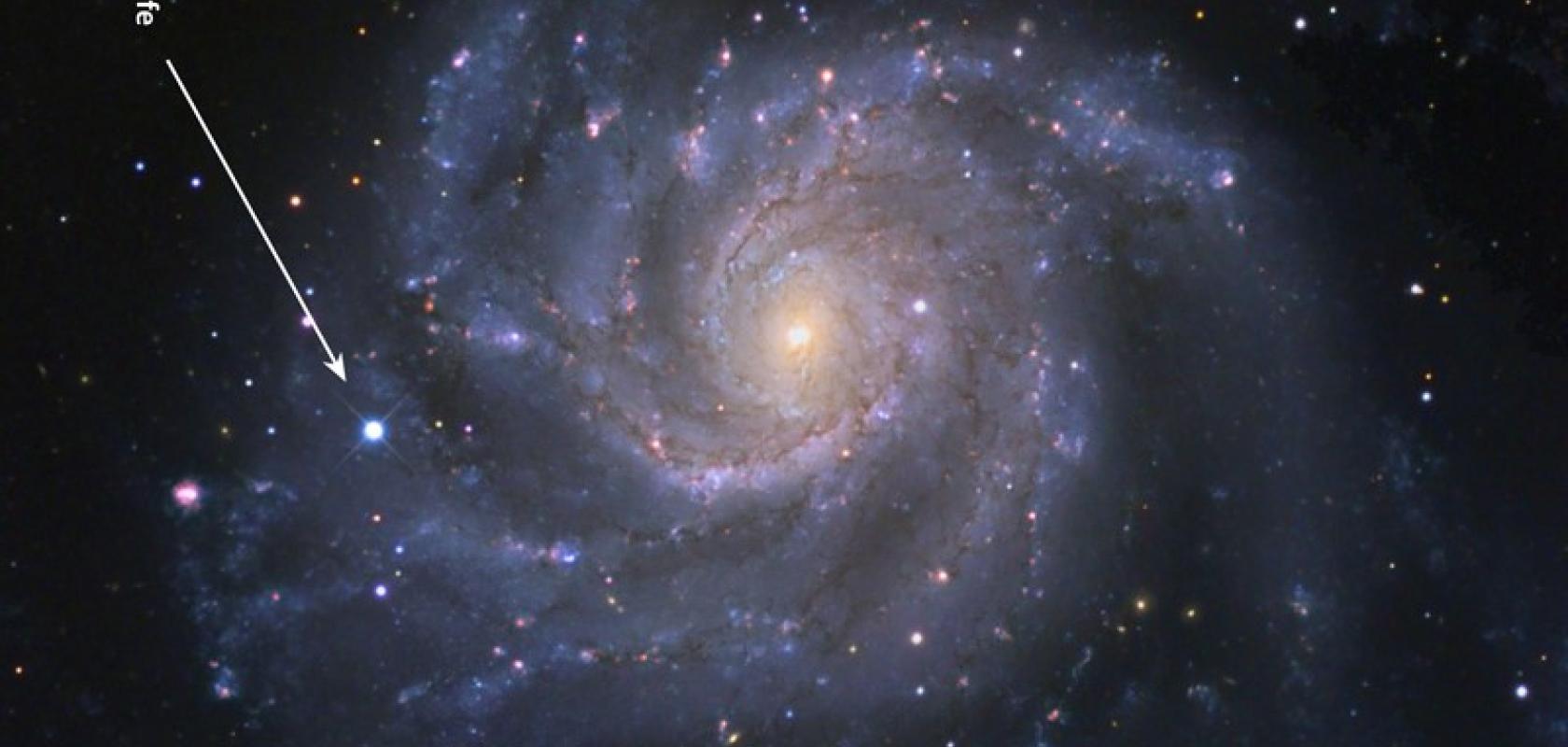Cosmologists have found a way to double the accuracy of measuring distances to supernova explosions – one of their tried-and-true tools for studying the mysterious dark energy that is making the universe expand faster and faster. The findings of these experiments could help researchers enhance dark energy experiments at major telescopes.
The results from the Nearby Supernova Factory (SNfactory) collaboration, led by Greg Aldering of the Department of Energy’s Lawrence Berkeley National Laboratory (Berkeley Lab), will enable scientists to study dark energy with greatly improved precision and accuracy, and provide a powerful crosscheck of the technique across vast distances and time. The findings will also be central to major upcoming cosmology experiments that will use new ground and space telescopes to test alternative explanations of dark energy.
Two papers published in The Astrophysical Journal report these findings, with Kyle Boone as lead author. Currently a postdoctoral fellow at the University of Washington, Boone is a former graduate student of Nobel laureate Saul Perlmutter, the Berkeley Lab senior scientist and UC Berkeley professor who led one of the teams that originally discovered dark energy. Perlmutter was also a co-author on both studies.
‘We’ve long had this idea that if the physics of the explosion of two supernovae were the same, their maximum brightnesses would be the same. Using the Nearby Supernova Factory spectra as a kind of CAT scan through the supernova explosion, we could test this idea,’ said Perlmutter.
Supernovae were used in 1998 to make the startling discovery that the expansion of the universe is speeding up, rather than slowing down as had been expected. This acceleration – attributed to the dark energy that makes up two-thirds of all the energy in the universe – has since been confirmed by a variety of independent techniques as well as with more detailed studies of supernovae.
The new results announced by the SNfactory come from a multi-year study devoted entirely to increasing the precision of cosmological measurements made with supernovae. Measurement of dark energy requires comparisons of the maximum brightnesses of distant supernovae billions of light-years away with those of nearby supernovae “only” 300 million light-years away. The team studied hundreds of such nearby supernovae in exquisite detail. Each supernova was measured a number of times, at intervals of a few days. Each measurement examined the spectrum of the supernova, recording its intensity across the wavelength range of visible light. An instrument custom-made for this investigation, the SuperNova Integral Field Spectrometer, installed at the University of Hawaii 2.2-meter telescope at Maunakea, was used to measure the spectra.
The SNfactory collaboration includes Berkeley Lab, the Laboratory for Nuclear Physics and High Energy at Sorbonne University, the Center for Astronomical Research of Lyon, the Institute of Physics of the 2 Infinities at the University Claude Bernard, Yale University, Germany’s Humboldt University, the Max Planck Institute for Astrophysics, China’s Tsinghua University, the Center for Particle Physics of Marseille, and Clermont Auvergne University.
The full story, written by Bob Cahn, is available on the Berkeley Laboratory website.


